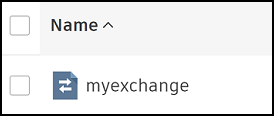Data Exchanges in BIM 360
Data Exchanges are a cloud-based method of enabling you to share your data more easily across the apps and teams you work with every day. Through Data Exchanges, you and your collaborators can work with the subsets of data you need instead of entire design models across Autodesk Revit, Autodesk Inventor, McNeel Rhino, Microsoft Power Automate, and other third-party products.
For example, suppose you are working with a stair fabricator who is working in Autodesk Inventor 2023. You want to share the stair tower portion of your model with them, but they don't need the entire model to accomplish their work. This is an opportunity to share work with a Data Exchange.
Key Capabilities
- Create Data Exchanges from many applications using connectors, store and manage your Data Exchanges in BIM 360 Document Management.
- Share the contents of a 3D view and not an entire file. This minimizes processing, upload, and download time.
- Members access only the specific and relevant data that they need while unnecessary model elements are not included.
- Cloud-based which means members have access to audit trails and up-to-date versions of their design data.
Create Data Exchanges
You can create and edit Data Exchanges directly in many different applications using connectors, and store those Data Exchanges in BIM 360 Document Management.
See the dedicated Data Exchange Connectors help site for details on all available connectors.
View Data Exchanges in BIM 360
When you create a Data Exchange using a connector, it will display in the selected folder in Document Management with a ![]() icon and can be viewed independently from the source Revit file.
icon and can be viewed independently from the source Revit file.

Click the Data Exchange to open in the viewer. You will view only items from the original Revit view and not the entire Revit model.
Manage Data Exchanges
You can manage Data Exchanges using most of the actions available to documents. However, the following actions do not work for Data Exchanges:
Download source files: This also means that recipients of a shared Data Exchange, or transmittal can't download the Data Exchange.
Note: Members can view a Data Exchange by either opening it directly from the Files tool on web, or clicking a link shared from another project member.Compare: Data Exchanges are not supported for a comparison.
Lock: You can't lock a Data Exchange.
Make current: You can't choose to make an older version of a Data Exchange into the current version.